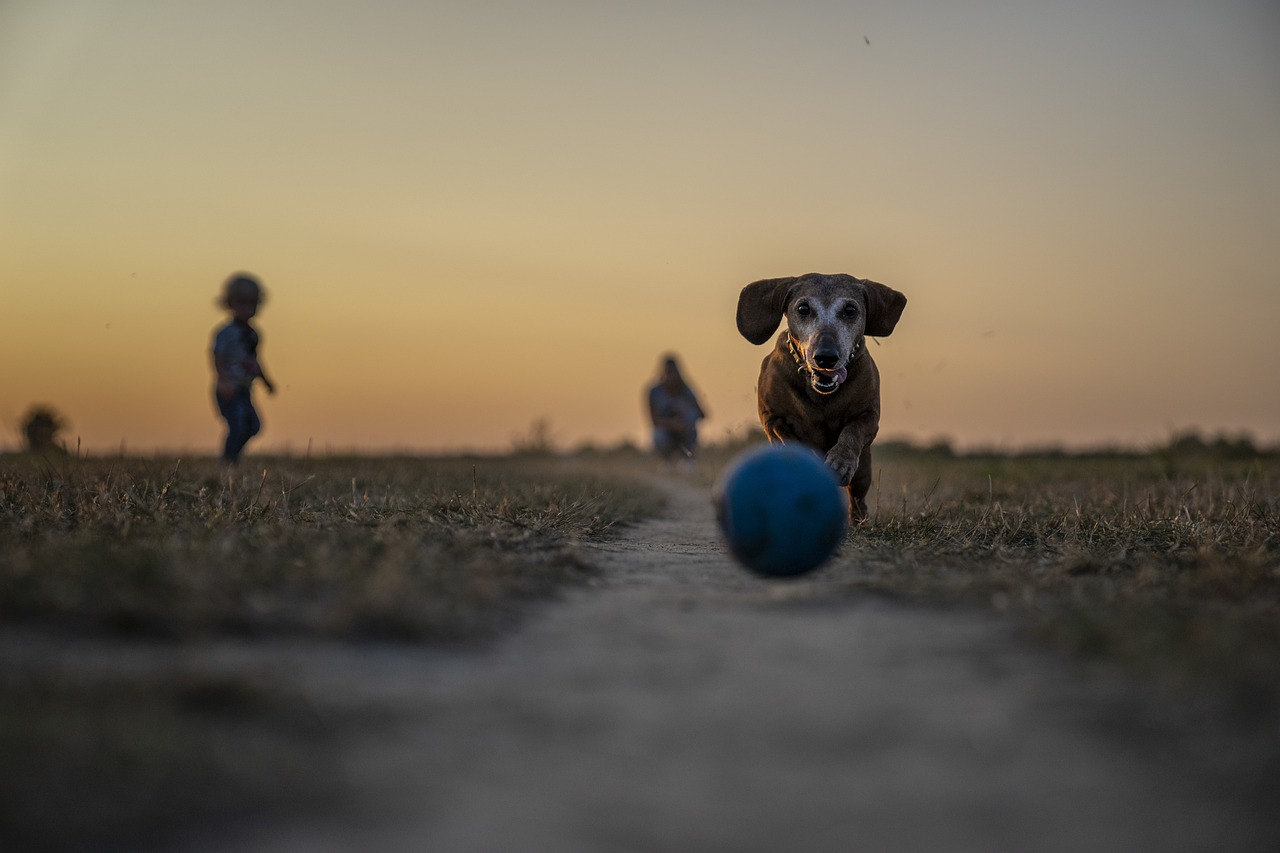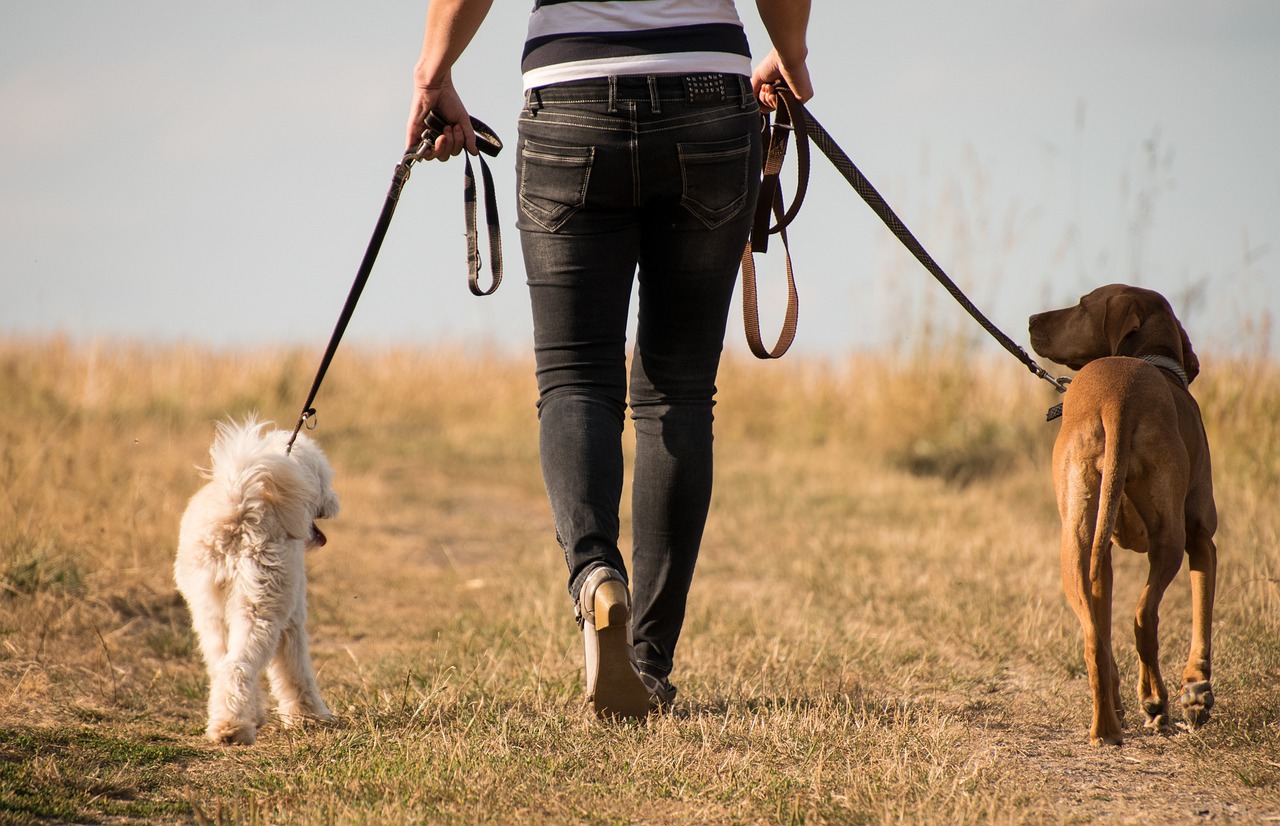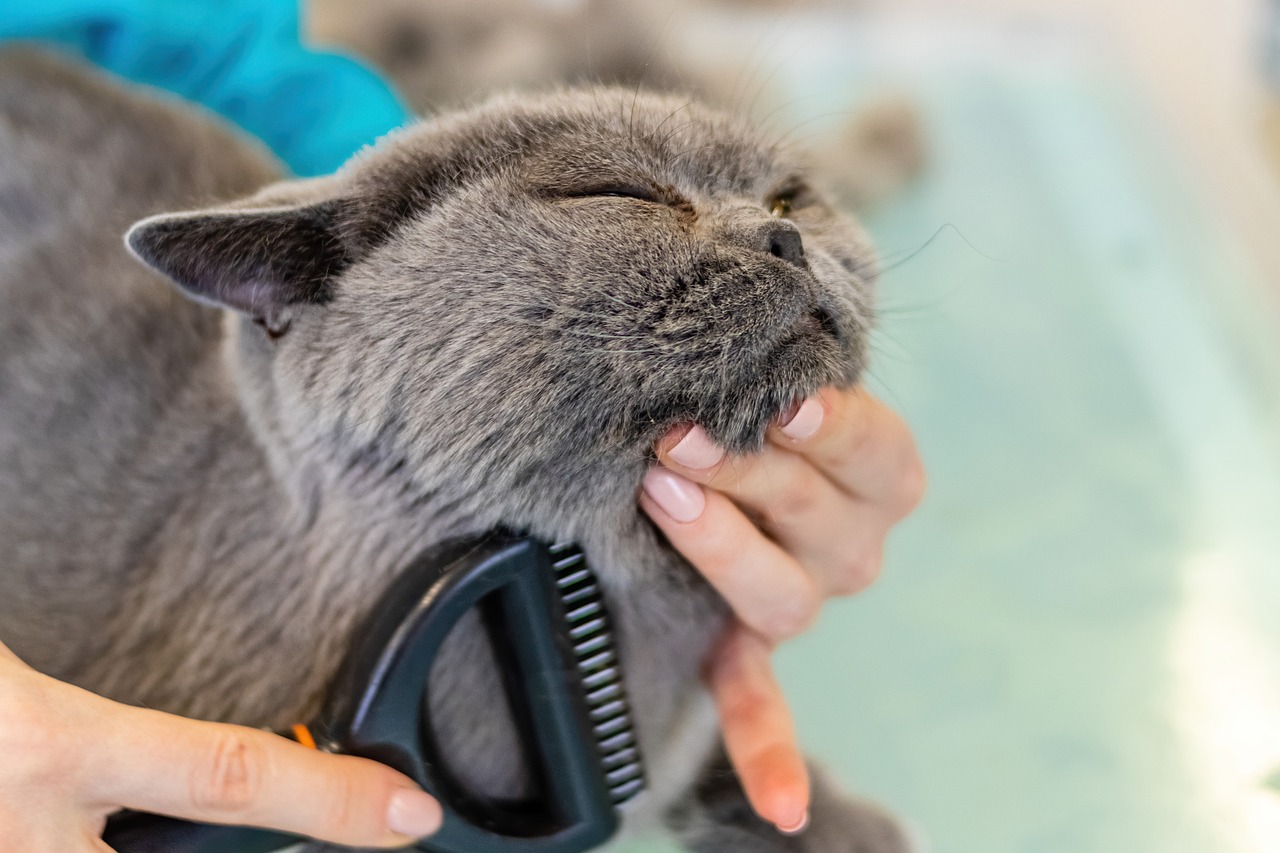Fetch – the quintessential dog game that’s as old as time, or at least as old as dogs realizing that running after a thrown object could actually be fun. Now, you might be thinking, “Why on Earth do I need a guide to teach my dog to fetch? Don’t dogs just…know how to do that?” Well, my friend, while some dogs seem to be born with an innate ability to chase and retrieve, others look at you like you’ve just thrown away their favorite toy. On purpose. And they’re not quite sure what they did to deserve such cruel and unusual punishment.
Fear not, for you’ve stumbled upon the ultimate guide, filled with genuine advice wrapped up in layers of humor, ready to transform your canine companion from a fetch-phobic furball into a retrieving rockstar. So buckle up, grab a comfy seat, and prepare to learn the art of teaching your dog to fetch – because let’s face it, a game of fetch is essentially the doggy equivalent of a human hitting the gym, and we all know your pooch could use a little cardio.
Step 1: Choose the Perfect Fetch Toy
First things first, you’ll need to find a fetch toy that’s more enticing than the dozen other squeaky creatures and chewable delights your dog has already annihilated. This is crucial because, believe it or not, dogs have preferences too. It’s like choosing between a good old plain pizza and a pineapple pizza – and we all know there’s a right choice there.
When selecting a fetch toy, consider your dog’s size, breed, and chewing capabilities. You don’t want to end up with a toy that’s too small, turning your fun fetch game into an unexpected choking hazard. On the other hand, choosing a toy that’s too large could lead to your dog just staring at it, pondering over how exactly you expect them to pick it up.
And let’s not forget about durability. Unless you want to be buying a new fetch toy every other week, you’ll want something that can withstand the mighty jaws of your furry friend. Trust me, your wallet will thank you.
Step 2: Find Your Dog’s Fetch Motivation
Now, it’s time to figure out what makes your dog tick. What is it that will make them want to chase after that toy like it’s the last piece of bacon on Earth? Some dogs are motivated by praise, others by treats, and some just have an insatiable love for the game.
Start by showing your dog the toy and getting them excited about it. You can wave it around, talk in that high-pitched voice that dogs seem to love, or even let them have a quick play with it. The goal here is to build anticipation and make your dog understand that this toy is the best thing since sliced bread.
Once you’ve got their attention and they’re practically bouncing off the walls with excitement, it’s time to throw the toy. But don’t just chuck it as far as you can. Remember, we’re teaching here, not competing in the Doggy Olympics. A gentle toss a few feet away will do the trick.
Step 3: Celebrate the Little Victories
If your dog runs after the toy, congratulations! You’ve cleared the first hurdle. Now, encourage them to bring it back to you. This is where things can get tricky, as some dogs may decide that fetch is actually a solo game and they don’t need you to participate. If this happens, resist the urge to chase after your dog like a madman. Instead, stay calm, stay put, and use your most enticing voice to call them back.
When they do return, throw a party. I’m talking praise, treats, belly rubs – the whole shebang. You want your dog to associate bringing the toy back with positive experiences, creating a mental connection that says, “Hey, this fetch thing is actually pretty great.”
Step 4: Repeat, But With Style
So, you’ve got your dog running after the toy and possibly even bringing it back. Pat yourself on the back; you’re doing great, coach! But as with any refined skill, repetition is key. However, this doesn’t mean you should turn your fetch sessions into a drill sergeant routine. Remember, we’re here to have fun, and your dog’s attention span is probably about as long as the time it takes for them to get distracted by their own tail.
Keep the sessions short and sweet, and always leave them wanting more. You can gradually increase the distance you throw the toy as your dog gets better at the game. And if you’re feeling extra fancy, you can even start incorporating some tricks. Ask them to sit before you throw the toy, or practice some basic obedience commands. You’ll be killing two birds with one stone – improving their fetch game and their manners.
Step 5: Dealing with Fetch Failures
Not all dogs are born to fetch, and that’s okay. If your dog seems more interested in sniffing the flowers or chasing their tail, don’t despair. They might just need a little more encouragement, or fetch might not be their game. And that’s perfectly fine. Dogs, much like humans, have their own preferences and personalities.
If you’re dealing with a fetch-resistant pooch, try experimenting with different toys or balls. Some dogs prefer plush toys, while others might go bonkers for a bouncy ball. And if all else fails, remember that there are plenty of other games and activities you can enjoy with your furry friend. Fetch is not the be-all and end-all of dog games.
Step 6: Mastering the Art of Fetch Etiquette
Now that you’ve got the basics down, it’s time to talk etiquette. Yes, even fetch has its own set of unspoken rules and manners. First and foremost, always make sure you’re playing in a safe and secure area. We don’t want Fido running off after a ball and straight into traffic. That’s a fetch game gone terribly wrong.
Also, pay attention to your dog’s body language and energy levels. Fetch is a high-intensity game, and it’s easy for dogs to get overexcited or overtired. Make sure to provide plenty of water and take breaks as needed. A tired dog is a happy dog, but an exhausted dog? Not so much.
And finally, be mindful of other dogs and people around you. Not everyone appreciates a slobbery ball being dropped at their feet, and not all dogs play well with others. Keep your dog’s leash handy, and be ready to step in if things get too rowdy.
Conclusion
Congratulations, you’ve made it to the end of this witty yet strangely informative guide on how to teach your dog to fetch. By now, you should have a decent grasp on the basics, along with a few laughs under your belt. Remember, fetch is supposed to be fun for both you and your dog, so keep things light-hearted and enjoy the process.
And who knows, with enough practice, your dog might just become the fetch champion of the neighborhood. Or not. But hey, at least you’ll have had some good laughs and quality time with your furry friend along the way. Happy fetching!
Pro Tips to Elevate Your Fetch Game to Legendary Status:
- Mix it Up: Variety is the spice of life, and this couldn’t be truer when it comes to a game of fetch. Don’t let your dog get bored with the same old routine. Try different environments, toys, and patterns to keep things interesting. Today, you might be at the park with a frisbee, and tomorrow you could be at the beach with a floating toy. Keep those doggy neurons firing!
- Use Fetch as a Training Opportunity: Fetch isn’t just a game; it’s a golden opportunity for training. Incorporate basic commands like “sit,” “stay,” and “drop it” into the game. Before you know it, your dog will be a fetch-playing, command-obeying machine. And let’s be honest, a well-trained dog is like a badge of honor in the dog park.
- Invest in a Fetch Toy Launcher: If you’ve got a high-energy dog who could play fetch for hours on end (or if you’re just not into the whole “throwing” thing), a fetch toy launcher might be your new best friend. These nifty gadgets can hurl toys far and wide, giving your arm a much-deserved break while still tiring out your pup.
- Be Patient: Not every dog is going to get the hang of fetch right away, and that’s perfectly fine. Be patient, and remember that the goal is to have fun. Celebrate the small victories, and don’t get discouraged if progress is slower than you’d like.
- Know When to Call it Quits: Fetch is exhilarating, and some dogs would play until they collapse if given the option. Be a responsible pet parent and know when to call it quits. Keep fetch sessions short and sweet, and always be mindful of your dog’s energy levels and body language.
- Always Check the Fetch Toy for Wear and Tear: Safety first, folks. Regularly inspect the fetch toy for any signs of wear and tear. If it’s starting to look more like a chewed-up piece of modern art than a fetch toy, it’s time to say goodbye and get a new one.
- Don’t Be Afraid to Seek Professional Help: If your fetch training is hitting a wall, don’t be afraid to seek the help of a professional dog trainer. Sometimes, a fresh pair of eyes and some expert advice are all you need to turn things around.
- Remember, It’s All About Fun: At the end of the day, fetch is all about having fun and bonding with your furry friend. Don’t get too caught up in the nitty-gritty details and forget to enjoy the moment. Laughter, after all, is the best medicine (even if your dog doesn’t quite understand the joke).
FAQ: Fetch-tastic Queries and Quandaries
Congratulations, your dog has mastered half of the fetch equation! They’re clearly interested in the toy, which is a great start. To encourage them to bring it back, make sure you’re throwing a big ol’ party every time they even think about returning to you with the toy. Treats, praise, belly rubs – lay it on thick. You want to make returning the toy the best part of the game.
Fetch sessions should be like a good sitcom – long enough to be enjoyable, but short enough to leave you wanting more. Aim for around 10-15 minutes, especially when you’re first starting out. You can adjust the time based on your dog’s age, breed, and energy level. Remember, we’re going for tired and happy, not exhausted and overworked.
Fetch isn’t every dog’s cup of tea, and that’s okay. Try experimenting with different toys and environments to see if anything sparks their interest. If not, there are plenty of other games and activities you can enjoy together. Fetch is not the only game in town!
Fetch is a great way to burn off excess energy, which can contribute to better behavior overall. However, it’s not a cure-all. If your dog is experiencing behavioral issues, it’s best to consult with a professional dog trainer or behaviorist.
Fetch can be a great game for puppies, but it’s important to keep a few things in mind. Make sure the toy is appropriate for their size and that the play sessions are short and gentle. Avoid encouraging them to jump or make sharp turns, as their little bodies are still developing. And as always, supervise playtime to ensure everyone is playing safe and having fun.
Once your dog has mastered the basics of fetch, you can start to up the ante. Try incorporating tricks and commands into the game, changing up the terrain, or using toys that bounce unpredictably. Just make sure not to make things too difficult too quickly – we want to challenge our dogs, not frustrate them.
Absolutely! Fetch can be a great indoor game, especially during bad weather or for apartment dwellers. Just make sure you have enough space, and maybe consider using a softer toy to avoid any unintentional redecorating.
If your dog’s love for fetch has turned into an obsession, it might be time to implement some boundaries. Make sure fetch isn’t the only game in town – encourage them to play with other toys and engage in other activities. And don’t be afraid to put the fetch toy away when it’s not playtime, so your dog learns that fetch is a special activity, not an all-day affair.
It’s the classic case of excitement overload. It’s like your dog is saying, “This game is so fun, I just can’t contain myself!” But fear not, dear reader, for this is a common issue with a fixable solution. When your furry companion starts confusing your hand for the fetch toy, it’s time to bring the game to a halt. Give them a calm and firm “no,” and wait for them to settle down before resuming play. Consistency is key here – you want to teach them that nipping leads to the end of the fun. And remember, they’re not doing it to be malicious; they’re just really, REALLY into the game.
Ah, the elusive “drop it” command – a cornerstone of the fetch experience, yet so often a stumbling block in the game. To teach this critical skill, start by trading them a treat or another toy in exchange for the fetch toy. As they drop the toy, say “drop it” and reward them generously. Practice makes perfect, so be patient and consistent. With time and practice, your dog will be dropping the toy like a pro, ready for the next exhilarating round of fetch. And just think of the bragging rights – “My dog? Oh, they’ve mastered the art of fetch, drop it and all!” Now go out there and fetch your way to glory!



